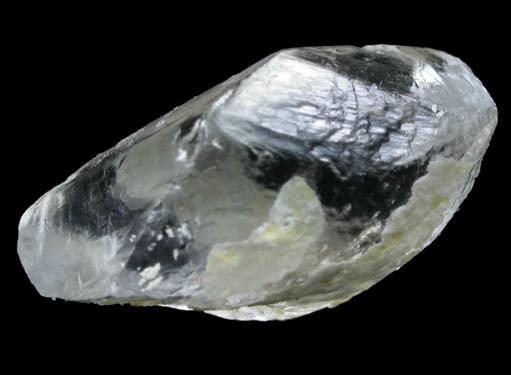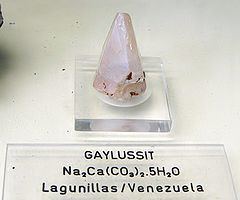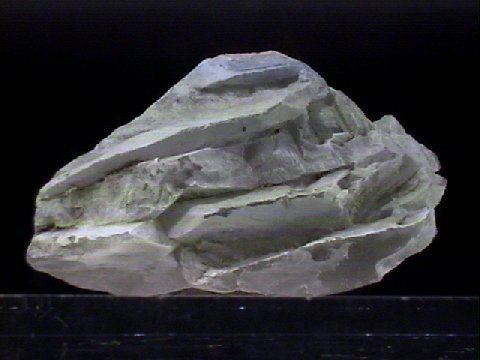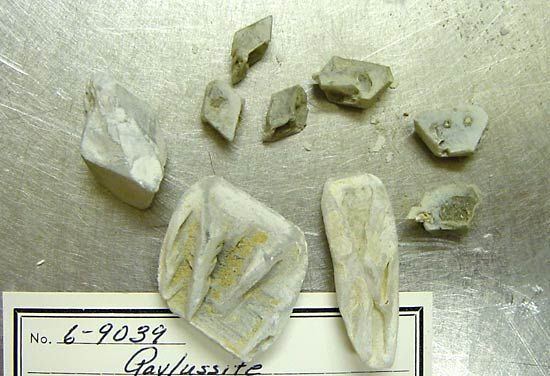Category Carbonate mineral Strunz classification 5.CB.35 Space group I2/a | Formula(repeating unit) Na2Ca(CO3)2·5H2O Crystal system Monoclinic | |
 | ||
Crystal class Prismatic (2/m)(same H-M symbol) | ||
Gaylussite is a carbonate mineral, a hydrated sodium calcium carbonate, formula Na2Ca(CO3)2·5H2O. It occurs as translucent, vitreous white to grey to yellow monoclinic prismatic crystals. It is an unstable mineral which dehydrates in dry air and decomposes in water.
Contents

Gaylussite meaning
Discovery and occurrence

It is formed as an evaporite from alkali lacustrine waters. It also occurs rarely as veinlets in alkalic igneous rocks. It was first described in 1826 for an occurrence in Lagunillas, Merida, Venezuela. It was named for French chemist Joseph Louis Gay-Lussac (1778–1850).

The mineral has been recently reported from drill core in Lonar lake in Buldhana district, Maharashtra, India. Lonar lake was created by a meteor impact during the Pleistocene Epoch and it is the only known hyper velocity impact crater in basaltic rock anywhere on Earth.


